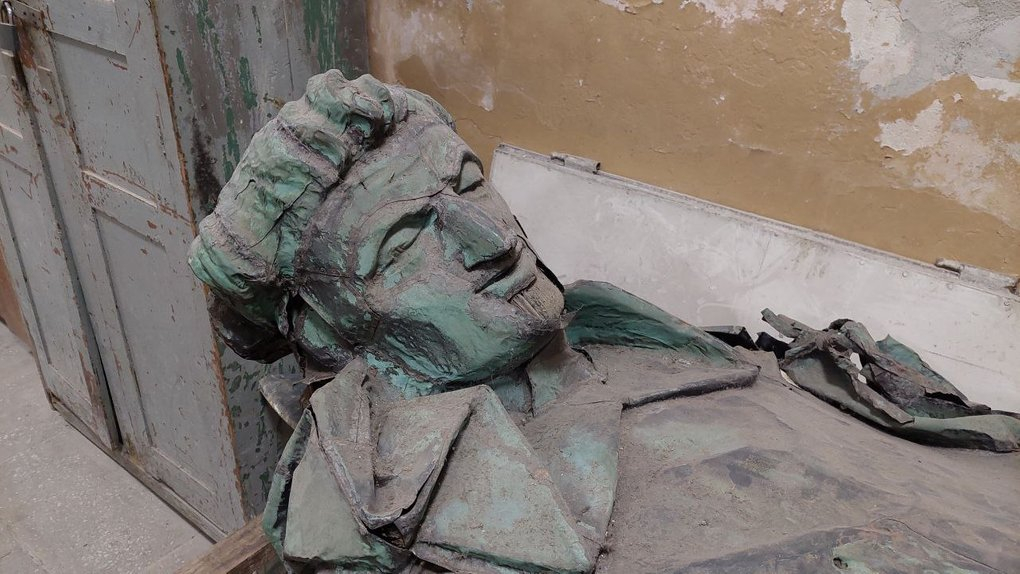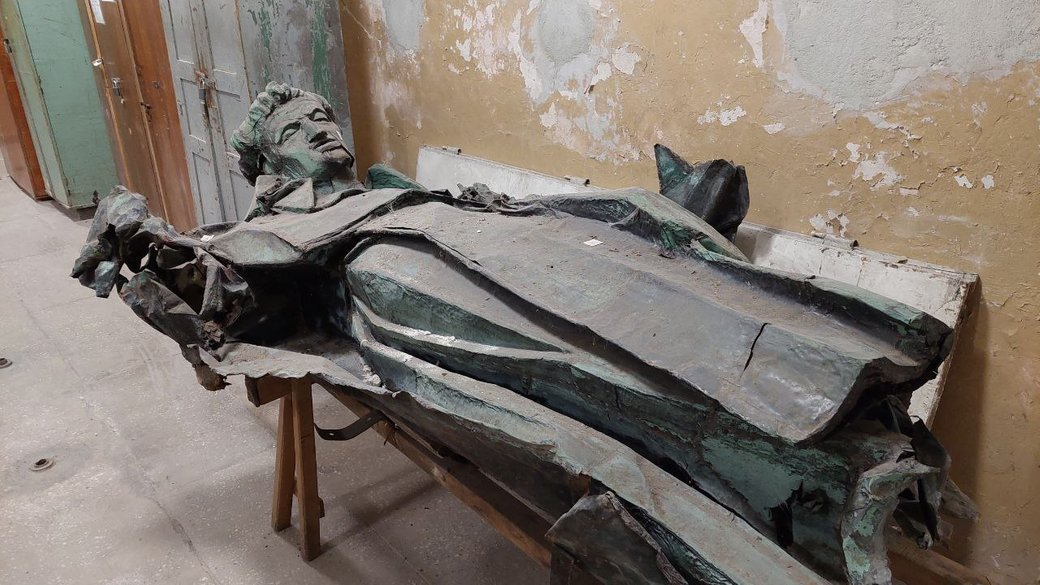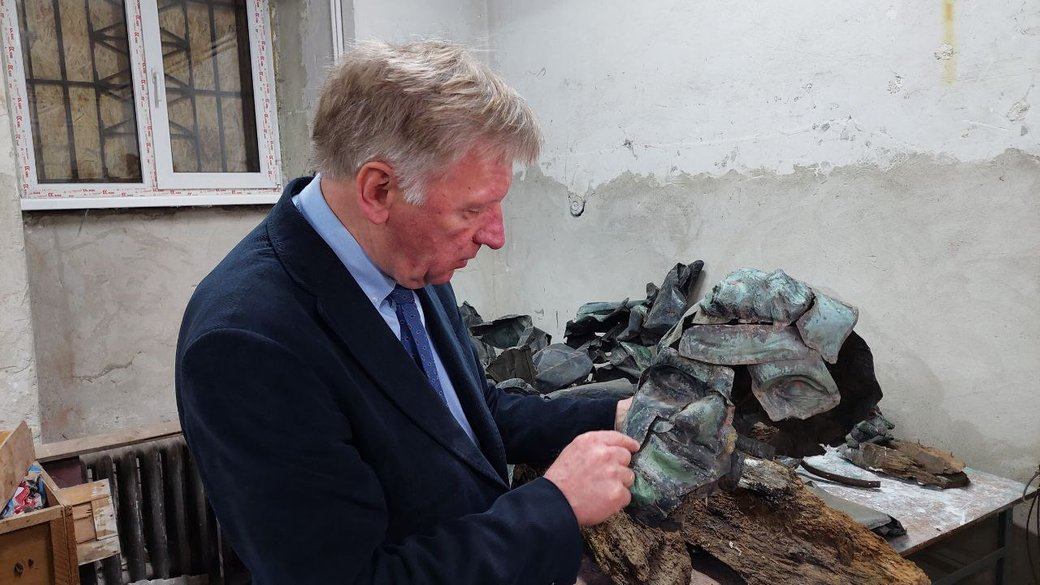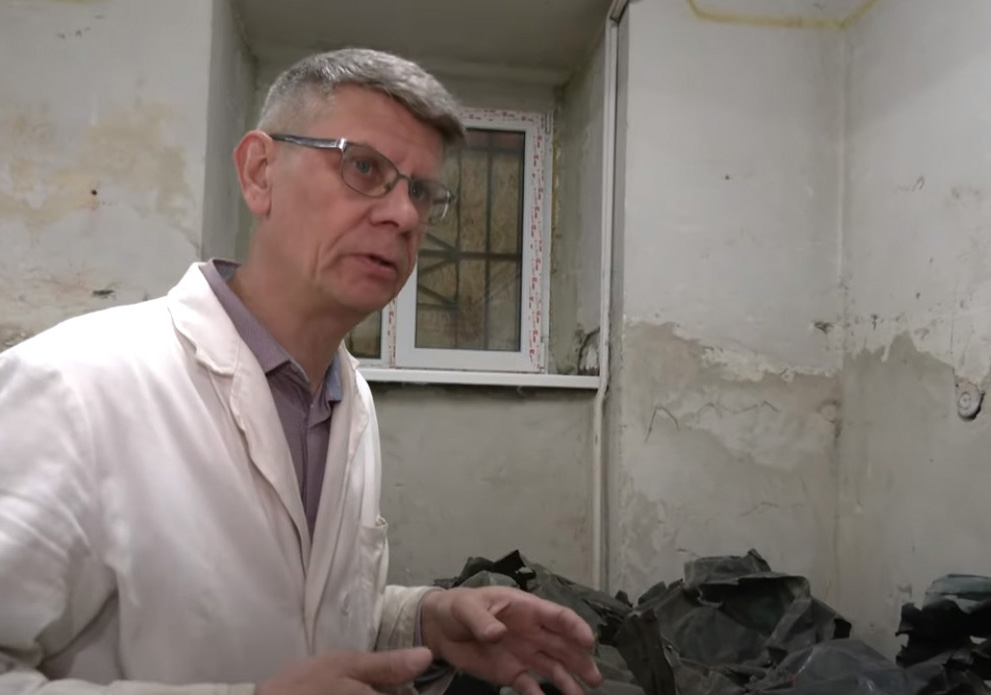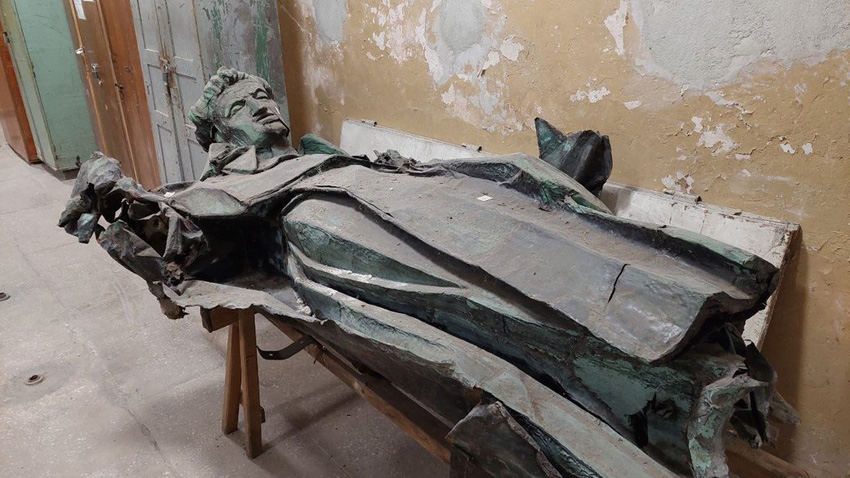In April of this year, the Department of Architecture and Conservation, Lviv Polytechnic National University, took on a project to restore sculptures from the former Dominican monastery in the town of Pidkamin. These are unique figures of saints carved from wood and covered with copper sheets. They are made in the Baroque style. The sculptures were originally carved from glued wooden bars, and later a bowl of thin copper sheets was placed on a finely carved wooden body. For each figure, the copper sheets were cut into separate pieces of the appropriate size and shape. Then they were nailed to the wooden body and, at the same time, shaped into the desired sculptural form with the help of a wrap.
The sculptures are quite old – for example, the statue of St. Dominic was created about 250 years ago, in the 18th century. The figures of the saints became one of the central decorations of the monastery, which the Polish king Jan Sobieski called «eastern Czestochowa». In total, three out of four statues, which were located in the upper part of the monastery’s bell tower, will be restored by Lviv Polytechnic.
– Up there, the tree could not withstand the wind, frost, and rain, respectively. The way they were handled afterwards, after the accident, wasn’t the best way to store them. They were not conserved, – says Mykola Bevz, Head of the Department, and adds that the restoration of one such sculpture will cost a lot – about 50 thousand euros.
Oleh Rybchynskyi, Professor at the Department of Architecture and Conservation, says that at first, conservation measures need to be taken, the wood needs to be stabilised, mould and beetles need to be removed, the wood needs to be cleaned and strengthened, etc. The professor also noted that this approach will be experimental, and later this method will be applied to other sculptures.
A lot of time has passed since the start of the work, and there are some results, although they are not as significant as we would like. According to Oleh Rybchynskyi, the identification of the sculpture fragments is ongoing. Since there are three of them, it turns into a kind of puzzle, but several times more complicated, as it is difficult to determine which piece belongs to which saint. But here modern technologies come to the rescue, in particular 3D modelling, which is itself an experimental practice (for now).
The statues are also subjected to a special long-term conservation – every three weeks they are placed in special baths with salts so that the wood, which is the basis of the restoration objects, is saturated again and can be worked with more or less safely. The water and salt treatments will last for about two more months, after which the restorers will start cleaning the metal and further strengthening it, and then discussing the attachment of the arms and plaques that once covered the head.
To sum up, we can say that there are positive developments. However, of course, there are a few ‘buts’. Relatively little time has passed to talk about any radical or fundamental changes. The question of financing this whole process remains open, because according to the professor, we learn that the grant that was discussed at the beginning of the coverage of the news about the restoration of the statues was never provided, which, of course, did not have a positive impact on the restoration. The Department of Architecture and Conservation has to work from the minimalist position it is in. And this is very unfortunate.
Just recently, our media informed that the Russians had completely destroyed the remains of the ancient Greek polis Chersonesos Tavria, which was a historical and cultural monument associated with the Greek colonisation of the Northern Black Sea region. Also, many monuments were damaged during the hostilities or were illegally exported as trophies by the occupiers. Of course, we cannot influence these factors immediately and decisively. But we can influence those historical and cultural objects that are on the territory controlled by our state. Otherwise, it turns out that we begin to appreciate our cultural heritage only when it has already been irretrievably lost. It is important to remember this and try to preserve any cultural achievements of mankind, at least so that our future generations can see them live, not in faded photographs.
Photos are taken from the suspilne.media website.
